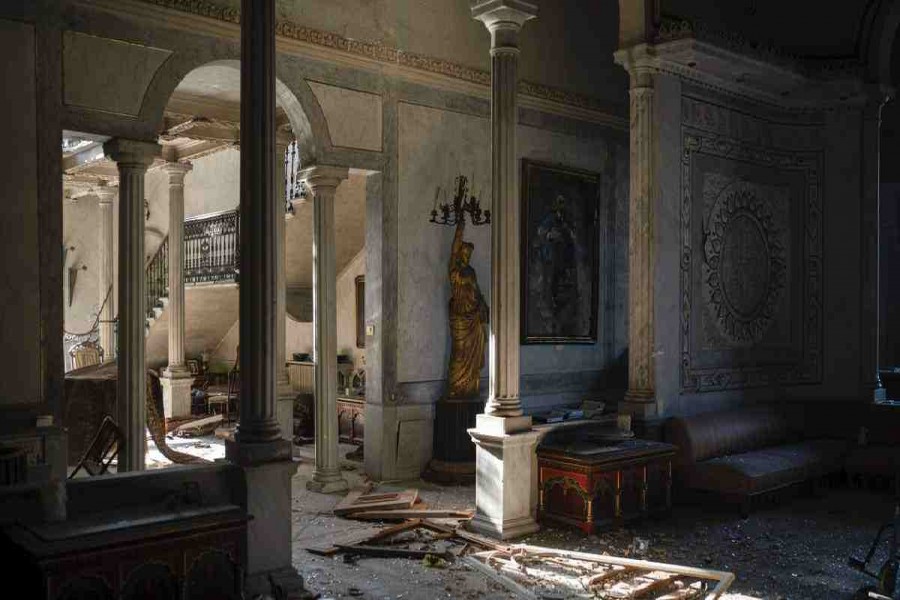Last week’s Beirut blast destroyed the 160-year-old landmark Sursock Palace, one of the most storied buildings in the Lebanese capital which withstood two world wars, the fall of the Ottoman Empire, the French mandate and Lebanese independence.
After the country's 1975-1990 civil war, it took 20 years of careful restoration for the family to bring the palace back to its former glory.
“In a split second, everything was destroyed again,” its owner Roderick Sursock says, reports AP.
He steps carefully over the collapsed ceilings, walking through rooms covered in dust, broken marble and crooked portraits of his ancestors hanging on the cracked walls. The ceilings of the top floor are all gone, and some of the walls have collapsed.
The level of destruction from the massive explosion at Beirut's port last week is 10 times worse than what 15 years of civil war did, Sursock says.
Several heritage buildings, traditional Lebanese homes, museums and art galleries have also sustained various degrees of damage in the blast.
The Sursock palace, built in 1860 in the heart of historical Beirut on a hill overlooking the now-obliterated port, is home to beautiful works of arts, Ottoman-era furniture, marble and paintings from Italy — collected by three long-lasting generations of the family.
The Greek Orthodox family, originally from the Byzantine capital, Constantinople — now Istanbul — settled in Beirut in 1714.
The three-story mansion has been a landmark in Beirut. With its spacious garden, it's been the venue for countless weddings, cocktail parties and receptions over the years, and has been admired by tourists who visit the nearby Sursock museum.
More than 160 people were killed in the blast, around 6,000 were injured and thousands of residential buildings and offices were damaged in the blast.


